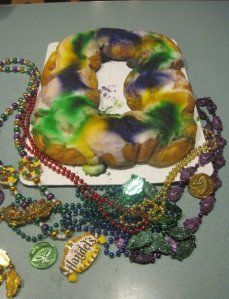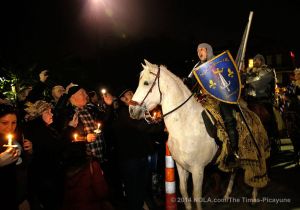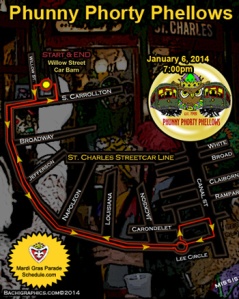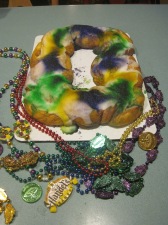 Today is Mardi Gras. The end of Carnival. The end of Ordinary Time. Ordinary Time?
Today is Mardi Gras. The end of Carnival. The end of Ordinary Time. Ordinary Time?
The Roman Catholic Church recognizes two stretches of Ordinary Time during their liturgical calendar. The first runs from the end of the Christmas Season, Epiphany (January 6th) up to Ash Wednesday, the start of the Lenten Season. The second is longer and less eventful, running from the end of Pentecost (the end of Eastertide) up to the Saturday before the beginning of Advent, the four-week period leading up to Christmas and the beginning of the liturgical year. In the grand scheme of things, the first is definitely more interesting than the second.
The first span of Ordinary Time, especially in places that celebrate Carnival or Mardi Gras, is anything but Ordinary. The time is filled with masked balls, King Cake parties, and eventually the festivities, feasting and parades leading up to Mardi Gras/Fat Tuesday/Shrove Tuesday/Pancake Day. Take your pick depending upon your local tradition.
In New Orleans, Ordinary Time ends exactly at midnight on Mardi Gras. It is so important that the police clear Bourbon Street, arresting those who persist in carrying their partying over into the early hours of Ash Wednesday. Nothing is left to chance or inebriated, self control. It. Is. Over.

Italian-American Marching Club Parade, Bourbon St., March 2007.
The curtain closes. In a season which recognized Christ’s 40 days in the desert, those seeking the fasting, prayer and penance of the Lenten season go to church to receive Palm Sunday’s recycled palm fronds in the form of ashes. A new season. A new holy season has begun.
But there are loopholes. While in past centuries believers gave up meat, eggs and dairy, during Lent, today’s Catholics must only give up meat on the Fridays. But these restriction, too, may be waived if St. Patrick’s Day (March 17th), St. Joseph’s Day (March 19th), or the Annunciation (March 25th) chance to fall on a Friday. Then, dioceses may choose to wave the Fast. And that is important in New Orleans, where St. Patrick’s Day and St. Joseph’s Day are important for Irish and Italian/African-American residents, respectively. In a span of a few days, St. Patrick’s parades, St. Joseph’s parades and altars, and Mardi Gras Indian processions will come and come. And while the religious connections may be tenuous, they are extremely important in their respective communities.

Uptown Indian Parade, March 20, 2011.
So, while the NOPD might clear the Quarter at midnight following Mardi Gras, the parades, the parties, and the beads continue, albeit at a slower pace.
Leave a Response »
















